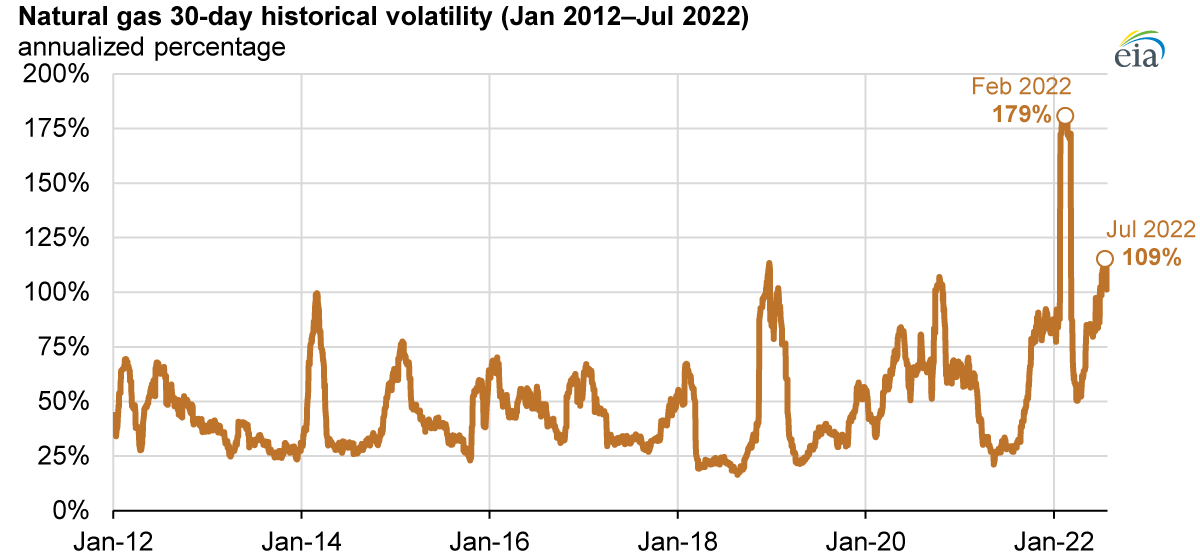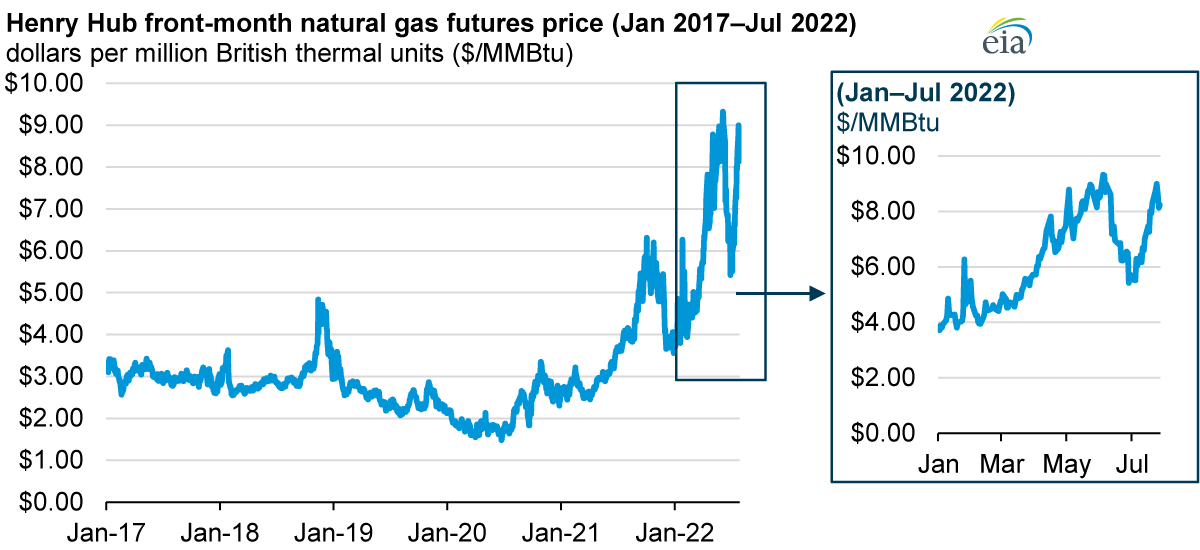U.S. natural gas price volatility (a measure of daily price changes) reached its highest level in 20 years, hitting record highs in the first quarter (January–March) of 2022. The 30-day historical volatility of U.S. natural gas prices, which is based on the U.S. benchmark Henry Hub front-month futures price, averaged 179% in February compared with 57% during the first quarter of 2021.

Historical volatility is a measure of daily closing price changes for a commodity at a specific time in the past. During July, historical volatility was lower on a percentage basis, in part, because natural gas prices were relatively higher than during the first quarter of this year.
The Henry Hub front-month futures price averaged $7.19 per million British thermal units (MMBtu) during July compared with an average of $4.46/MMBtu during February. Natural gas price volatility averaged 124% during the first quarter of 2022 and 75% during the second quarter.
Increased uncertainty about market conditions that affect natural gas supply and demand can result in high price volatility. Events that have contributed to changing market conditions include:
- Production freeze-offs
- Storms
- Unplanned pipeline maintenance and outages
- Significant departures from normal weather
- Changes in inventory levels
- Availability of substitute fuels
- Changes in imports or exports
- Other sudden changes in demand
U.S. natural gas prices are typically more volatile during the first quarter of a year because of the fluctuating demand for natural gas for space heating as weather changes. Factors that contributed to heightened volatility in the first three months of this year include:
- Weather-driven fluctuations in natural gas demand
- Declining natural gas production in January and February
- Declining natural gas storage in the Lower 48 states
- Record U.S. LNG exports to Europe to help offset reduced natural gas supplies from Russia

Historical Henry Hub front-month natural gas price volatility fell to an average of 56% in April but rose in subsequent months, averaging 109% in July. Warmer-than-normal temperatures and increased domestic supply contributed to this increase in volatility.
The temporary shutdown of the Freeport LNG terminal in June decreased demand for feed gas by 2 billion cubic feet per day, generating a surplus of natural gas on the domestic market. The Henry Hub futures price fell by 39% from June 10 to June 30. In July, however, the warmer-than-normal temperatures across the Lower 48 states resulted in increased natural gas demand in the electric power sector, absorbing much of the Freeport LNG-related surplus. As a result, the natural gas futures price increased 52% in July compared with June.
Principal contributor: Katy Fleury

Follow us on social media: